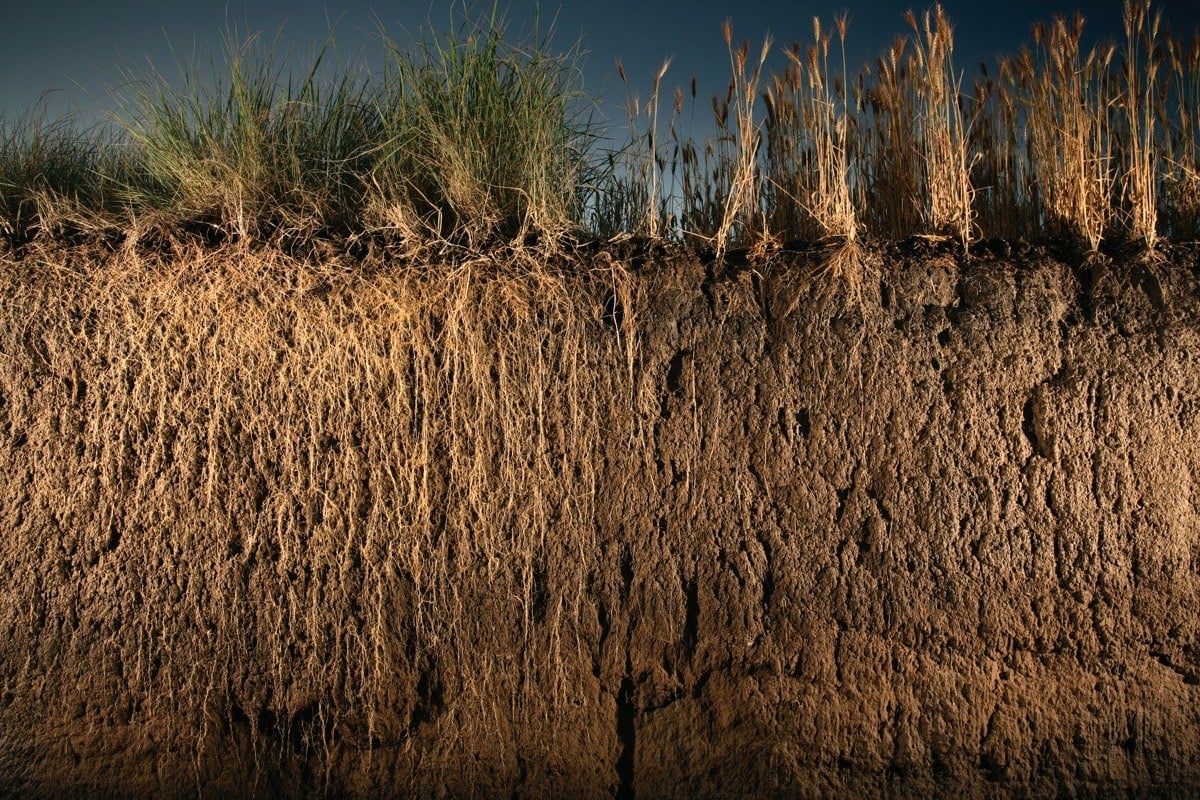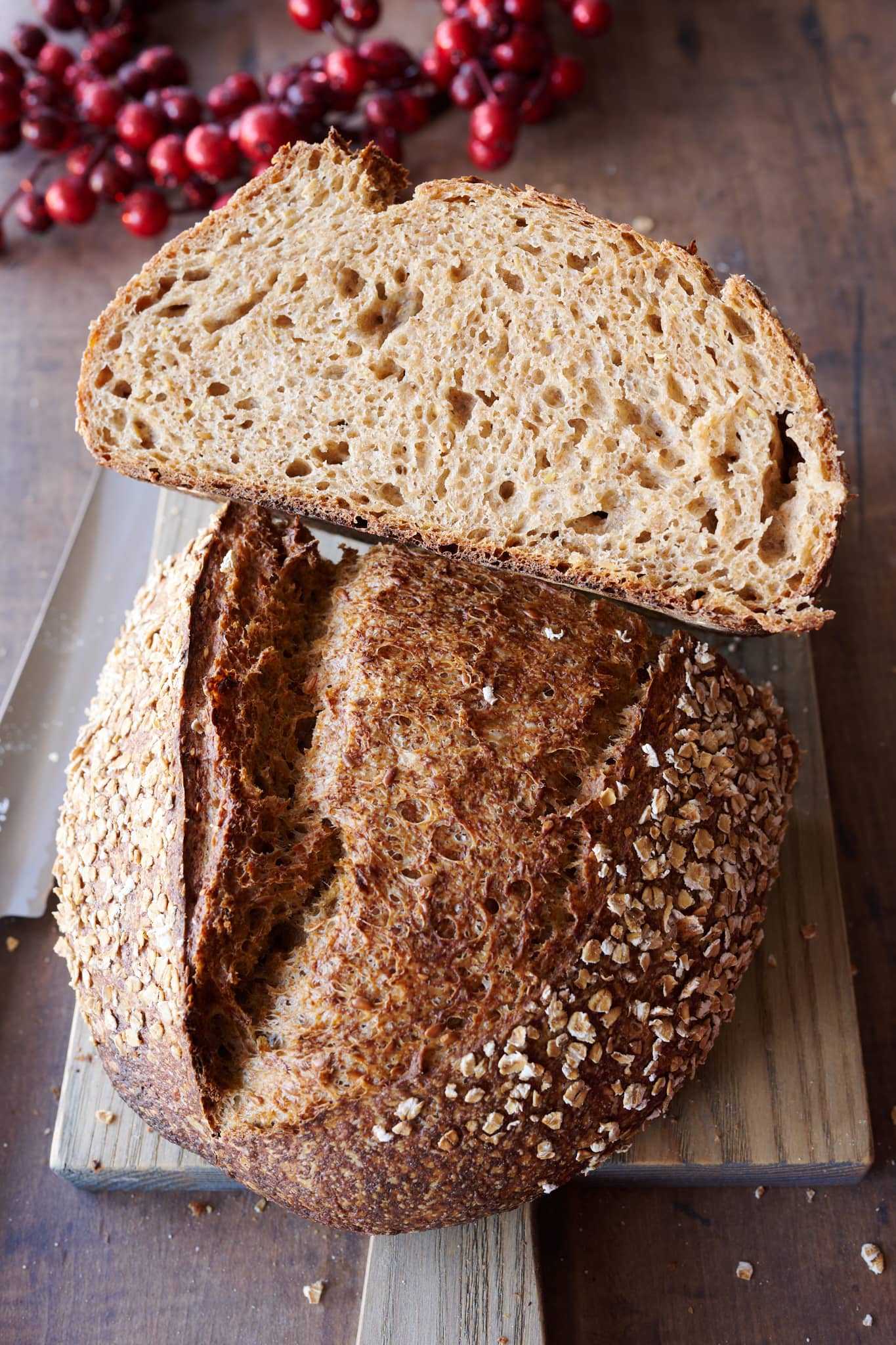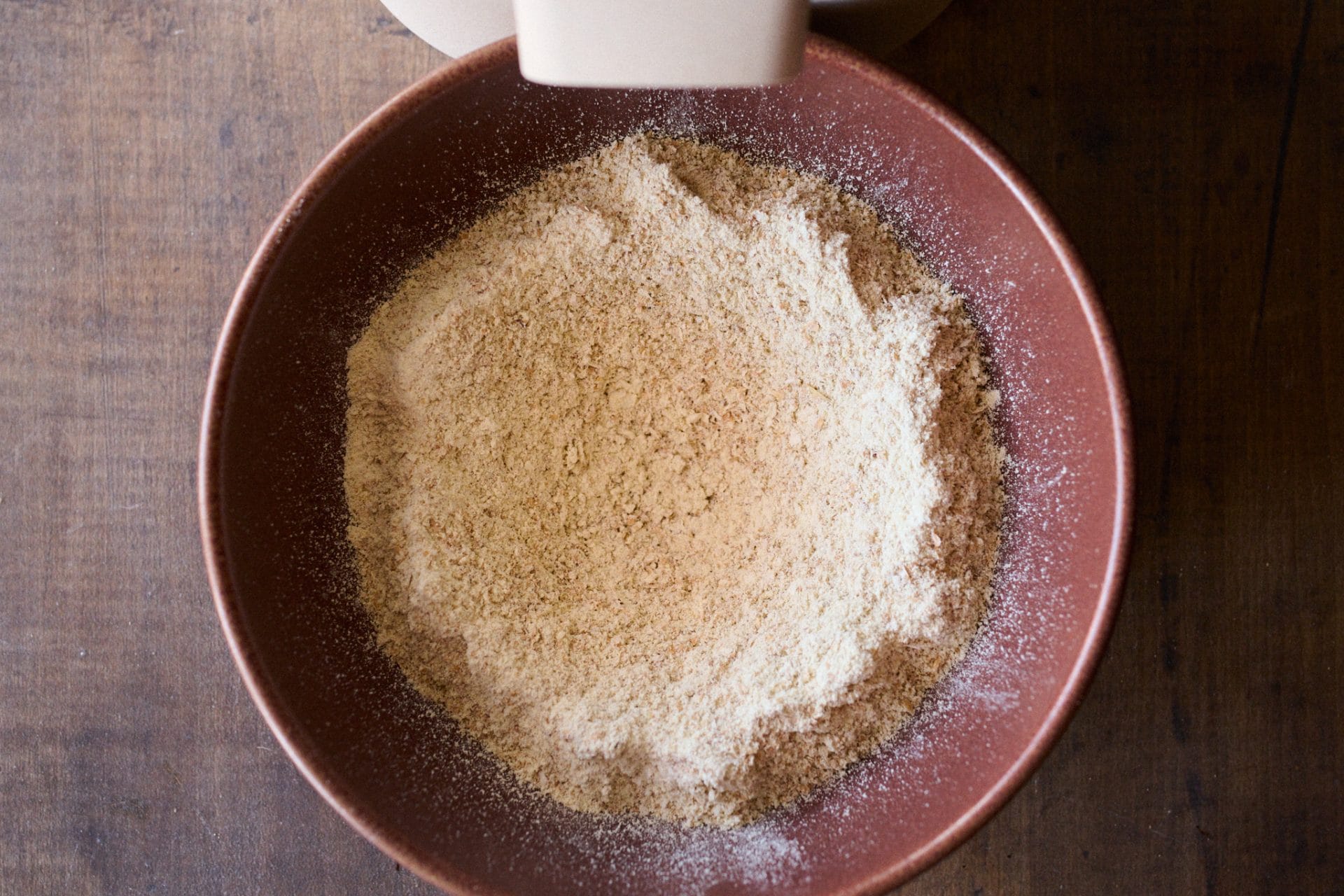There are two causes to strive flour created from the bunchgrass Kernza in your subsequent sourdough bread. Firstly, it offers the loaf a novel taste profile some bakers name nutty or natural—and most eaters name scrumptious. The second purpose is as a result of Kernza flour has the potential to dramatically enhance the surroundings.


What’s Kernza?
Almost all of the world’s main food crops, together with wheat, rice, maize, oats, rye, barley, teff, sorghum, and sugarcane are grasses. Although there are greater than 10,000 species of grasses, their potential as meals derives from their means to supply giant nutritious seeds. We shoppers name these seeds grain, which we eat for his or her carbohydrates, protein, and important minerals. Kernza (additionally known as intermediate wheatgrass,Thinopyrum intermedium) is a distant relative of wheat that produces seed heads which can be much like wheat. It’s native to grasslands in Europe and Asia.
Why add one other to the lengthy record of grains eaten by human populations? As a result of all of the world’s grains are annuals, that means yearly farmers have to until the soil and plant recent seeds. Kernza, the trademarked identify of intermediate wheatgrass, is perennial, that means (in concept, at the very least) it may be planted as soon as and harvested repeatedly, 12 months after 12 months.
The Environmental Benefits of Kernza
Everytime a area is cleared of vegetation with its soil turned in preparation for planting, naked soil is uncovered to the weather. Wind can blow irreplaceable topsoil from fields (assume: the Dust Bowl of the Thirties) or rain erodes soil, robbing it from fields and depositing it in rivers and streams. If perennial grains like Kernza will be developed, retaining the soil lined all year long, plowing could possibly be eradicated and valuable topsoil could possibly be protected and preserved.
The mission of The Land Institute in Salina, Kansas is the event of perennial grain crops like Kernza. Once I visited The Land Institute within the early Nineties, the very first thing their director on the time, Wes Jackson, did was stroll me to a river working alongside their farm. The river was the colour of milk chocolate, carrying eroded topsoil from midwestern farms to the Mississippi delta. “That’s why,” stated Wes, pointing on the river, “we’re doing what we’re doing.”
A second downside with plowing is attributable to the quantity of gasoline essential to energy a tractor everytime it strikes throughout a area. Only a few tractors, particularly giant fashions dragging plows via tons of of acres of soil, get the form of environment friendly gasoline mileage of, say, a Prius. Tractors generate plenty of carbon dioxide, a climate-warming fuel.
One other hazard of plowing—and it is a refined, however essential (the form of factor I realized as a PhD pupil in Soil Science, however not the form of factor typically written about on the entrance web page of the newspaper)—is that plowing exposes tiny particles of soil natural matter to microscopic organisms. Micro organism and fungi gorge on the vitamins beforehand hidden from them in distant soil crevices. As soon as consumed, that soil natural matter, wealthy in carbon, and useful in all types of how for crops, is not obtainable to complement the soil.


Worse nonetheless, the lack of soil natural matter signifies that carbon as soon as saved in soil is transferred to the ambiance as carbon dioxide, the waste product of microbial decomposition. Transfer carbon dioxide from soil to the ambiance and the planet continues to get hotter.
Not like annual corn, soy, and wheat, perennial Kernza doesn’t must be reseeded yearly. As a substitute, it continues rising from the identical base, and a complete lot of plowing will be prevented. Furthermore, when in comparison with wheat, Kernza has an amazingly deep and bountiful root system. Kernza truly transfers carbon dioxide from the ambiance deep beneath the soil floor, reversing carbon emissions, and successfully delaying local weather change. That alone is trigger for celebration.
Add all of it collectively and you’ve got a crop that sequesters atmospheric carbon, retains the soil lined 12 months spherical, protects topsoil from erosion by wind and rain, and reduces the variety of passes wanted by farm tools.
There’s one further profit for these of us who bake: Kernza flour makes scrumptious bread.


Kernza Breeding Challenges
With the aim of making, nearly from scratch, a plant able to producing prodigious portions of grain with out a have to reseed it yearly, researchers at The Land Institute began a breeding program in 2003. Amongst their early goals was deciding on crops with giant seeds and bountiful seedheads: the extra every plant produces the better the yield of harvestable meals grown on each acre. It isn’t as straightforward because it sounds. For comparability, grasses already within the human pantheon (wheat, corn, rice, and many others.) have been chosen by farmers 12 months after 12 months for his or her superb traits because the daybreak of human settlements, roughly 10,000 years in the past. That’s an enormous head begin.
Plant breeders, historic or fashionable, want to avoid wasting the seeds of crops (and never eat them) with one of the best mixture of attributes. These are many, amongst them: yield, resistance to pests, deep roots, means to supply grain 12 months after 12 months, local weather resilience, shatter resistance when the seeds are shaken from their stalks, free threshing means, giant seed dimension, and robust stalks that don’t readily blow over on windy days.
When, on the finish of a rising season, a area trial reveals one or two useful traits—say, giant grains and an improved yield—-it needs to be cross-bred with the winners of the local weather resilient pressure and planted once more. There is no such thing as a assure that the crossed varieties will excel at both the unique traits or the newly hoped for match. And if it does this 12 months, it won’t subsequent 12 months, when the climate is slightly dryer or slightly hotter. Profitable plant breeding, even with the instruments of contemporary science, takes a long time. (Quicker, one hopes, than the ten,000 years put into the event of current crops, however a few years nonetheless.)
Whereas promising, Kernza just isn’t an ideal crop. To this point, yields of Kernza on a per acre foundation are solely about one-fourth as a lot as derived from the same area of wheat. Extra discouraging, its yields decline quickly within the second or third 12 months after planting, although the remaining grass makes wonderful forage for animals. Consequently, it in all probability must be replanted each three to 5 years. Not but what breeders are hoping for, however nonetheless higher than plowing and planting yearly.
The Land Institute has partnered with researchers all over the world in France, New Zealand, Sweden, Israel, Turkey, Russia, Germany, Denmark, and all through the USA.
The early returns are constructive. Farmers are serious about experimenting with the brand new crop; and Kernza’s means to rapidly sequester carbon and preserve further carbon in the soil in long-term sequestration means it’s completely value further research.

Baking Bread With Kernza
Making Kernza develop profitably is simply half one of many puzzle of bringing it to market on a big scale. Farmers are solely going to develop hundreds of acres of Kernza if they will make a revenue. With out the economies of scale accrued by wheat farmers and millers accustomed to managing hundreds of acres and tons of grain, the worth for Kernza stays painfully excessive.
For bakers who may use Kernza flour there’s a studying curve. As is the case with flours created from substances apart from wheat, Kernza flour behaves otherwise than what wheat-based bakers are conversant in. Its protein content material just isn’t solely increased than most baking flour, however its gluten construction, in line with at the very least one report, is considerably inelastic and viscous. Like all grains, there are different makes use of for Kernza past bread, together with cereal, popped grain, and sprouted grain crackers. It may also be malted to be used in whiskey, beer, and muffins and cookies sometimes made with softer wheats.
As a result of Kernza’s seeds are smaller than wheat’s, flour created from Kernza tends to be increased in bran content material and consequently could require extra water to hydrate. Nonetheless, early adopters overwhelmingly reply positively to Kernza’s taste profile: “nutty” being probably the most continuously cited time period I see; although “cinnamon,” “natural,” and “candy” additionally present up as descriptors. In accordance with the Land Institute, bakers additionally seem to understand being on the forefront of a baking problem that’s contributing to the struggle in opposition to local weather change.


Nutritionally, Kernza is increased in protein, fiber, carotenoids, and other antioxidants, when in comparison with wheat flour. Its protein content material is double that present in white wheat berries. In comparison with white entire wheat, it comprises nearly 5 occasions as a lot calcium, and practically double the amount of dietary fiber (practically seven occasions the fiber as is present in all-purpose white flour)1.
The place to Discover Kernza Flour
To ensure that Kernza to be totally integrated into the business meals system a number of hyperlinks within the commodity chain must be strengthened. Farmers have to supply the grain with consistency; millers who’re able to working with small tons must be situated close to the farms elevating Kernza, (tons of or hundreds of kilos, fairly than hundreds of thousands of kilos that ordinarily cross via giant rollers in industrial mills); {and professional} bakers have to get comfy working with a product more likely to be a lot much less constant in its efficiency than blended flours they’re accustomed to.
All that stated, house bakers ought to contemplate experimenting with Kernza. If you wish to strive Kernza, some present distributors embrace Prairy Foundation (look within the Provisions tab), Breadtopia, which sells whole grain, and The Land Institute has licensed these distributors.
Kernza FAQs
Is Kernza gluten-free?
Kernza is much like annual wheat and, subsequently, just isn’t gluten-free.
What does Kernza style like?
Kernza has a barely candy, grassy, and nutty taste profile.
Is Kernza entire grain?
If milling Kernza at house, it may be used as a complete grain flour added to bread, pancakes, waffles, and extra. When buying Kernza flour, make certain it isn’t sifted if you’d like it entire grain.
What’s Subsequent?
Take a look at The Good Loaf’s Kernza sourdough bread recipe, which makes use of 30% freshly milled Kernza for a healthful and scrumptious loaf of bread.







